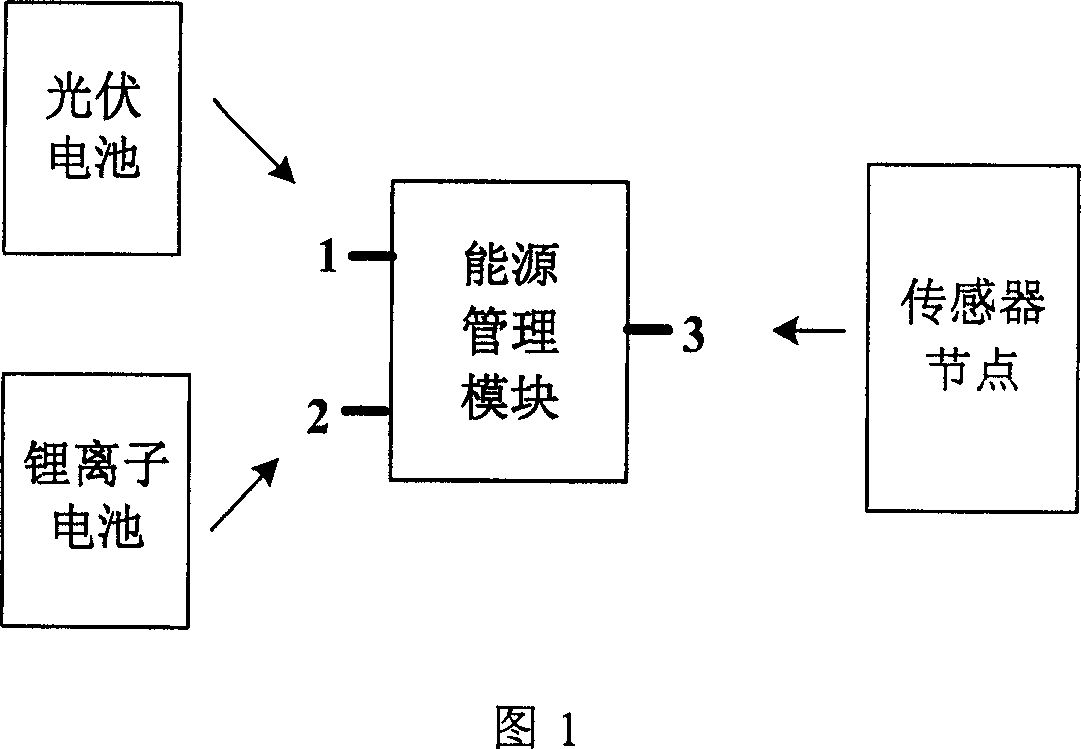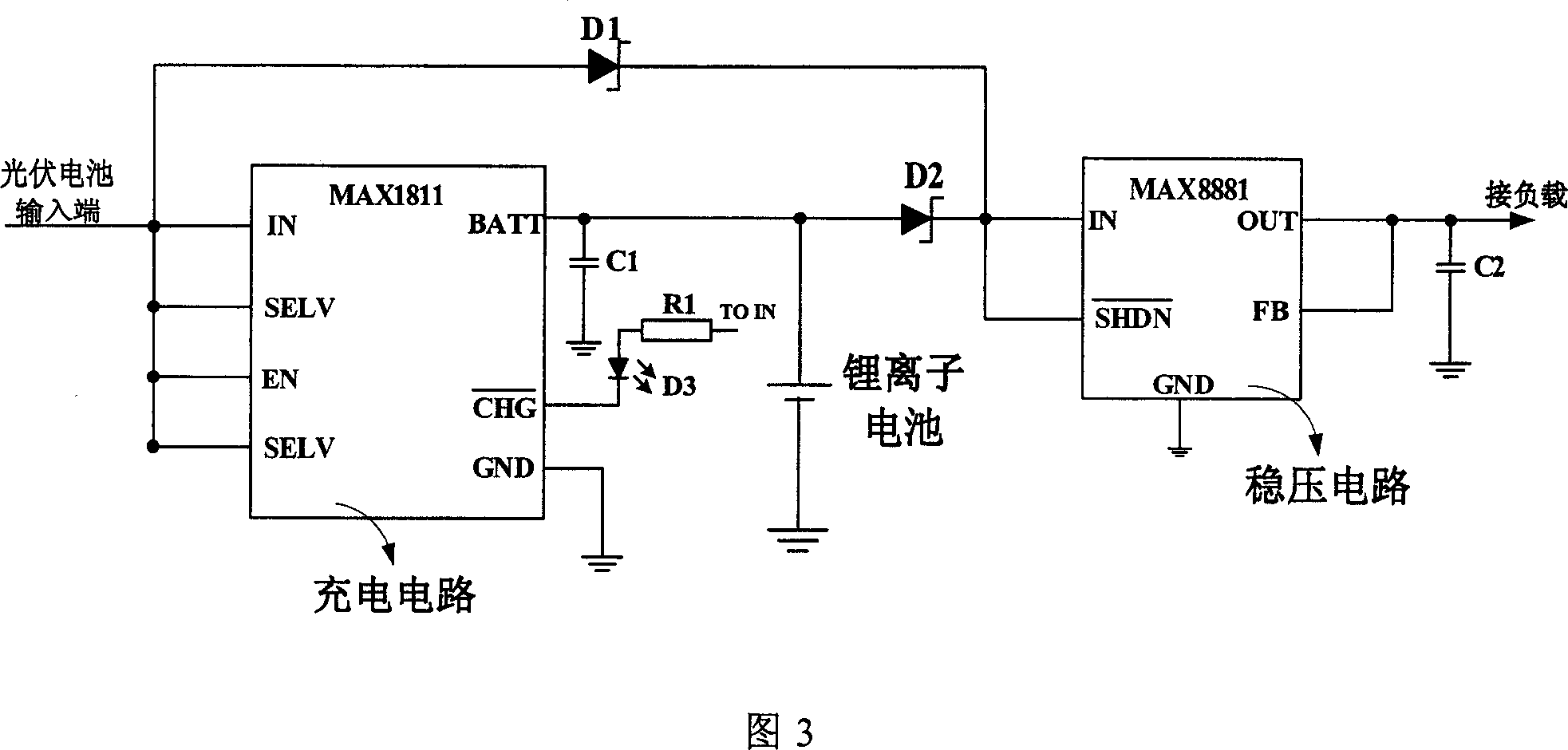Self - powered micro system integrated from photovoltaic energy sources and nodes of sensors
A sensor node and self-powered technology, applied in photovoltaic power generation, current collectors, electric vehicles, etc., can solve problems such as short service life and manual maintenance, achieve low cost, prolong service life, and solve energy bottlenecks
- Summary
- Abstract
- Description
- Claims
- Application Information
AI Technical Summary
Problems solved by technology
Method used
Image
Examples
Embodiment Construction
[0020] The self-powered microsystem of the present invention integrates photovoltaic energy and sensor nodes, which can realize the self-powered supply of the nodes, thereby prolonging the service life of the sensor network. The self-powered microsystem includes photovoltaic cells, lithium-ion batteries, energy management modules, and sensor nodes. As shown in Figure 1, when in use, the photovoltaic battery, lithium-ion battery, sensor node and energy management module are connected through the photovoltaic battery interface 1, lithium-ion battery interface 2, and sensor node interface 3, and the sensor can be realized by placing the system outdoors. The nodes work continuously.
[0021] The energy management module includes a charging circuit and a voltage stabilizing circuit. The working mode of the self-powered microsystem of the present invention is shown in Figure 2. Under the condition of sufficient light, the electric energy generated by the photovoltaic cell is stabil...
PUM
 Login to View More
Login to View More Abstract
Description
Claims
Application Information
 Login to View More
Login to View More - R&D
- Intellectual Property
- Life Sciences
- Materials
- Tech Scout
- Unparalleled Data Quality
- Higher Quality Content
- 60% Fewer Hallucinations
Browse by: Latest US Patents, China's latest patents, Technical Efficacy Thesaurus, Application Domain, Technology Topic, Popular Technical Reports.
© 2025 PatSnap. All rights reserved.Legal|Privacy policy|Modern Slavery Act Transparency Statement|Sitemap|About US| Contact US: help@patsnap.com



